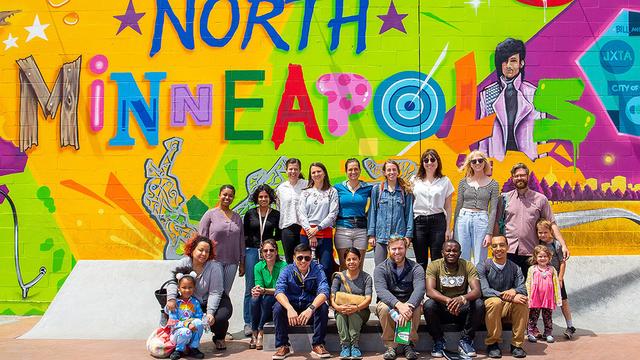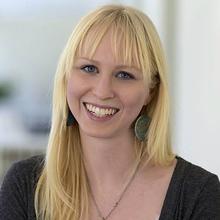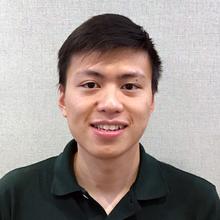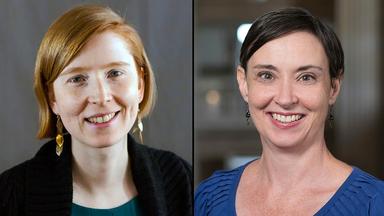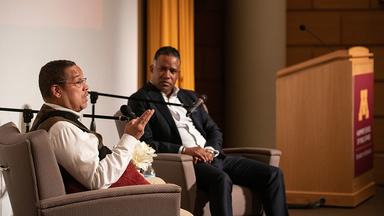When cities decide to improve parks and create more green spaces in underserved neighborhoods, it seems like a good thing. But that often leads to unintended consequences for the residents in those areas, including higher housing costs that may force them to move elsewhere. That phenomenon is known as gentrification.
Think of gentrification as neighborhood change, in which housing market values increase and drive out low-income residents. Green gentrification can lead to the same outcomes when cities invest more in parks, greenways, and the cleanup of brownfields.
A team of researchers from the Humphrey School of Public Affairs’ CREATE Initiative spent the summer examining the extent of green gentrification in Minneapolis and working to develop tools that can help cities address it.
Minneapolis is an interesting place to study this trend, says Rebecca Walker, a PhD candidate at the Humphrey School and one of the CREATE summer scholars. Historically, there’s been a lack of investment in lower-income neighborhoods in Minneapolis, she says.
“In 2016, the Minneapolis Park Board introduced equity rankings to determine which parks should be improved, so now you’re seeing more investments in lower-income neighborhoods,” Walker says. “There’s a lot of concern about how increased spending on green areas will affect these neighborhoods, and one of our questions is whether that’s changing the housing and rental markets.”
Community Engagement
A core element of the research project is its partnership with two nonprofit organizations, Hope Community and Pillsbury United Communities, which are deeply involved in issues of neighborhood diversity and equity in Minneapolis.
The organizations and researchers held a community mixer and took an environmental justice tour of North Minneapolis earlier this summer, to talk about how they can work together and support each other.
“It’s valuable for us to be present in the community, to get to know people and build relationships on a more casual basis,” Walker says, as well as to hear their concerns and priorities.
Jake Virden, a staff member at Hope Community, says it’s essential for the researchers to build trust with the neighbors.
“These are real live issues that we’re dealing with,” Virden says. “The staff and the researchers have been very genuine, responsive, and open to critique and follow through. It’s been welcome and refreshing.”
The researchers collaborated with their partners to prioritize the issues to focus on, says Bach Nguyen, another summer scholar.
“They had an interest in housing prices as well as rental prices, for example. We also discussed what format the information should be in, to reach people most effectively,” Nguyen says. “The main thing for us is to make sure that our work is valuable to them.”
That work involved collecting and analyzing data on housing prices, rental prices, and park investment, to see whether the cost of housing changes when parks are improved.
As the summer wound down, the team completed some short-term data products like maps and rent projections, and delivered them to the community partners.
“These tools will help fill a major gap in the literature about why some parks lead to gentrification and others don’t,” says Walker.
They’ve already been put to good use. Virden notes that his organization referred to the CREATE research during an event at the end of the summer on rent control policies in a Minneapolis neighborhood.
“We’re actively engaged in policy debates around development projects in Minneapolis neighborhoods, to fight green gentrification, and this research has been really helpful,” Virden says.
Longer term, the CREATE researchers hope to develop more sophisticated models that could help predict those patterns in the future, to see how development can change the makeup of a community.
“That’s a ‘big data’ project, so we won’t have any conclusions for quite a while,” says Nguyen. “One of our goals is to create something that other scholars could follow up on down the road.”
Research Crosses Academic Boundaries
Another important aspect of the summer scholar program is its interdisciplinary approach; it brought together researchers from very different disciplines to work together on a topic.
Walker, for example, is pursuing her doctorate in public policy and sustainability, while Nguyen is working on his doctorate in chemical physics. The third member of their team is in communication studies.
“As someone studying a hard science, learning to understand and listen to the community has been really valuable for me,” says Nguyen. “It’s very different compared to my day-to-day work. It’s not typical to get a chemist to work with a geographer!”
Walker adds that this team-based approach is “kind of unheard of for a PhD program.”
“In a dream world, all of my research down the road will be interdisciplinary,” she says. “I almost can’t imagine trying to tackle a project with the skill set of just one specialty area. This has totally changed my perspective on what research should look like.”
That’s precisely the point, says Assistant Professor Bonnie Keeler, co-director of the CREATE Initiative and a strong advocate of interdisciplinary research.
“I’ve been excited to see them working together, seeing what it means to translate their work outside the academy, building relationships with external partners, and figuring out what research looks like when it's responsive to community concerns,” Keeler says. “These students are way outside their comfort zones, but they did a really great job.”
